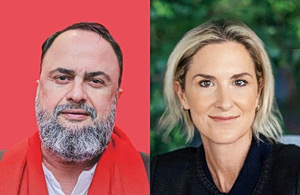Imagine a father in Middletown, Ohio, a Rust Belt city and the hometown of U.S. Vice President JD Vance, scrolling through his social media feed. He sees news clips of migrants arriving in overcrowded camps halfway across the world. The images are unfamiliar; the language is strange; the social media commentary is heated. In a moment of discomfort, he feels something shift inside him—uncertainty turning into resentment. This, in many ways, is xenophobia’s subtle power: the anxious reflex to push away what seems foreign, alien, and threatening.
Yet, amid these global waves of distrust, a countercurrent is stirring. In the background, people are discovering what some scholars call xenosophia—the “wisdom of the Other.” Unlike simple tolerance—mere coexistence—xenosophia welcomes difference as an opportunity for understanding and growth. This perspective shift can be radical: it reframes “the stranger” as an unexpected teacher rather than an inherent threat.
The Roots of Xenophobia—and Its Fallout
Xenophobia does not arise in a vacuum. Economic stagnation, political turmoil, environmental stress, and social fragmentation can all heighten people’s anxieties, fuelling a desire for easy scapegoats. Populist movements exploit this tension, turning legitimate worries into a rhetoric of “us versus them.” Migrants or other minority groups become objects of suspicion. Seen through a xenophobic lens, the “Other” is reduced to stereotypes that fit populist narratives: they “take jobs,” “threaten traditions,” or “erode unity.” These stock phrases, repeated often, gain traction in a climate of uncertainty.
And the fallout is real. In many Western democracies, nationalism and ultra-right-wing politics have re-emerged, demanding closed borders and valorizing older, insular ways of life. The father in Middletown may never meet an actual refugee, but televised sound bites and online comments build an emotional wall long before any in-person encounter could take place. A vacuum of genuine understanding persists, leaving fear—and those who exploit it—free rein.
Xenosophia: When the Stranger Teaches Us
Here enters the concept of xenosophia: a deliberate practice of remaining open to people, ideas, and experiences that do not fit comfortably within our inherited comfort zones. Unlike simple tolerance—”I don’t agree with you, but I guess we can coexist”—xenosophia is more active. It takes seriously the notion that each encounter with difference can invite us to stretch our moral imagination.
German scholar Heinz Streib, professor of psychology of religion at Bielefeld University has written extensively about this “responsive” stance toward the unfamiliar. He observes that some of the greatest wisdom traditions—from Socratic humility to Eastern contemplative practices—tie deep insight to a willingness to engage with the radically new. Think of the childlike wonder you experience when you’re confronted with something you can’t quite classify: you can close off, letting confusion turn into frustration, or you can slow down, investigate, and allow the encounter to change you.
Dinners of Many Cultures
Initiatives like the Refugee Food Festival and local dinners actively promote xenosophia by fostering genuine empathy and understanding between locals and refugees. These gatherings bring people together, breaking down barriers through shared cultural experiences such as preparing and enjoying meals together.
Vincent Cochetel, Director of the UNHCR Europe Bureau, reflects on the Refugee Food Festival: “Started in Paris in 2016, the Refugee Food Festival is a wonderful initiative that brings together locals and refugees through a shared cultural experience—the simple joy of preparing a nice meal and enjoying good food. It also raises awareness about refugee issues while creating opportunities for refugee chefs, showcasing their talents, and fostering their integration.”
There are many other local-level initiatives in which local families and new arrivals share signature dishes from their respective heritages. Through halting conversations and shared laughter over food mishaps, participants start to see each other’s humanity. Over months, these dinners draw larger and more diverse crowds: schoolteachers, accountants, and jobseekers all discovering that “foreign” is just a label we apply when we have too little information.
The Aesthetics of the Possible: Imagining New Paths
Often, xenophobia and populism exploit a stunted imagination, offering simplistic—and ultimately destructive—solutions. Such movements say: “Close the gates, keep the strangers out, turn back the clock.” But human history is about improvising new ways to thrive together—a process that requires creativity, which French researcher Nicolas Verger, from the Department of Psychology at Dublin City University, calls an “aesthetics of the possible.” The idea is that we respond emotionally and bodily to the signals around us, and these responses shape how we envision the future.
The aesthetics of the possible underscores how imaginative responses to social challenges can reshape collective attitudes. By responding creatively rather than reactively, societies can expand their moral imagination and envision new paths toward openness and inclusivity.
When we see or sense something profoundly new—like a gesture of kindness from a person who supposedly represents a “scary” group—it can jolt us. We grow curious. Our internal scripts (“they must be dangerous”) clash with our lived experience. That clash can spark either defensive recoil or a creative reimagining of our own assumptions. In other words, each unexpected kind word or surprising act of empathy expands the “possibility space” of what the future might hold.
Iceland’s Welcoming of Syrian Refugees
In 2015, the Icelandic government planned to accept just 50 Syrian refugees, citing limited resources. Then, an Icelandic author posted an open letter on Facebook welcoming Syrian families to stay in her home. Overnight, nearly 10,000 people—a significant chunk of Iceland’s population—followed suit, offering everything from spare bedrooms to Icelandic language lessons. Here was the “aesthetics of the possible” in action. Through personal stories and heartfelt testimonials, ordinary Icelanders reimagined how national policy might shift. The surge of empathy online collided with official caution, ultimately influencing more expansive measures to help refugees settle and integrate. The “impossible” quickly became plausible.
How Xenosophia Counters Radicalization
Radical ideologies—whether jihadist or neo-Nazi—are built on a narrative that demonizes the Other. Each side believes it must defend a pure identity from an existential threat. This worldview is sustained when individuals remain isolated within tight echo chambers, rarely challenged by actual encounters with difference. The less real engagement we have with people unlike ourselves, the easier it is to caricature them.
In contrast, xenosophia sees difference not as an enemy but as a potential wellspring of insight. Consider the story of a Nigerian migrant who found himself in Hungary, a nation where anti-immigrant sentiment has soared in recent years. Despite facing hostile slurs, he began volunteering at a local soup kitchen to serve the homeless—most of them ethnic Hungarians. Within weeks, his presence changed the social dynamic. Passersby, who might have scowled at him on the street, paused at the soup line to say hello, intrigued by why “an African man” would help feed their neighbours. The shock of seeing “the stranger” as a caretaker created new emotional ripples—some fleeting, some more lasting—planting seeds that might soften hearts.
The effect is magnified at a systemic level, too. When communities adopt xenosophic policies—such as cross-cultural mentorship programs, language exchange events, or truly multicultural classrooms—they create regular, meaningful contact between diverse groups. Over time, these repeated positive interactions form new social habits. Radical ideologies have a harder time taking root because their bedrock—fear—is undermined by daily evidence of real human connections.
A Mindset Revolution
Ultimately, the move from xenophobia to xenosophia is not about downplaying the real concerns that prompt citizens to fear strangers. Economic and cultural disruptions are genuine. But xenosophia reframes these disruptions, encouraging us to see “the stranger” as a partner who might help us navigate the uncertainties of a changing world.
From awe-inspiring glimpses of entire families leaving war zones to everyday smiles between neighbours who once exchanged only suspicious glances, these small acts expand our moral imagination. They illustrate an “aesthetics of the possible,” a sense that new social realities can be forged in the space once occupied by fear.
Xenosophia does not guarantee utopia. Not every gesture of hospitality will be reciprocated or understood. However, each moment of genuine openness chips away at our ingrained habit of seeing the Other as a danger. The father in Middletown scrolling through social media might pause if he sees a video of that Nigerian volunteer cooking for hungry Hungarians. He might wonder why, and that pause—however brief—can be a first crack in the walls of preconceived bias.
For centuries, societies have oscillated between anxious suspicion of outsiders and bold expansions of moral community. By embracing xenosophia and letting ourselves be surprised by the generosity or unexpected creativity of strangers, we inject possibility back into our collective narratives. In a time rife with polarizing political slogans, that openness is not just humane: it might be our best defence against the siren song of radicalization. And it starts with a simple readiness to learn from what we do not yet understand.



